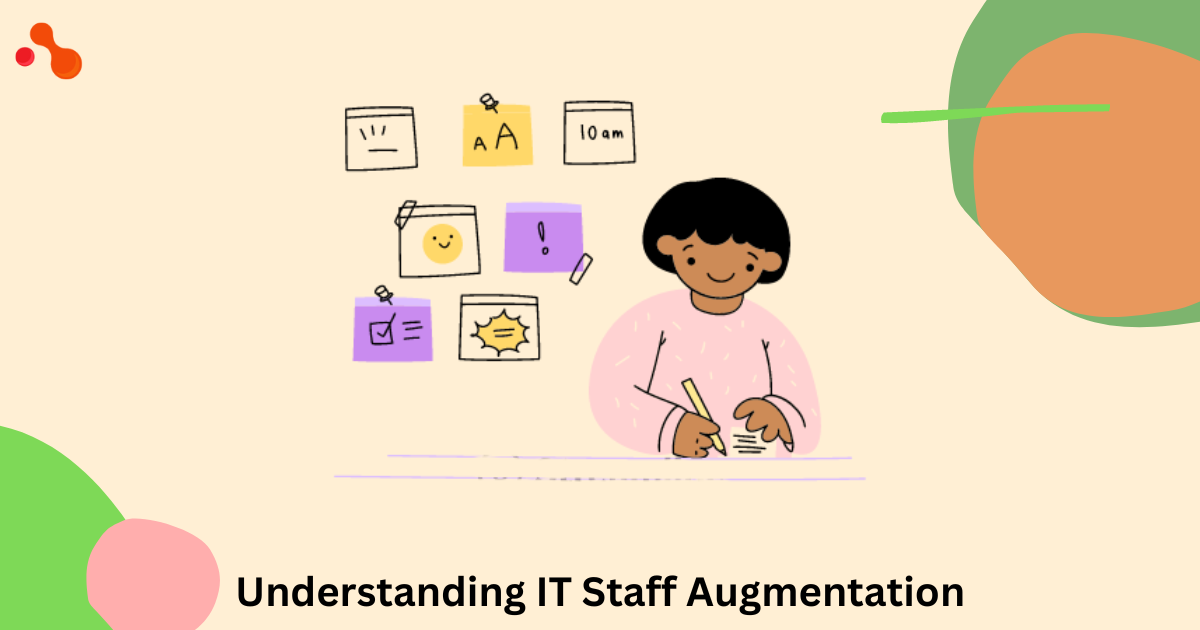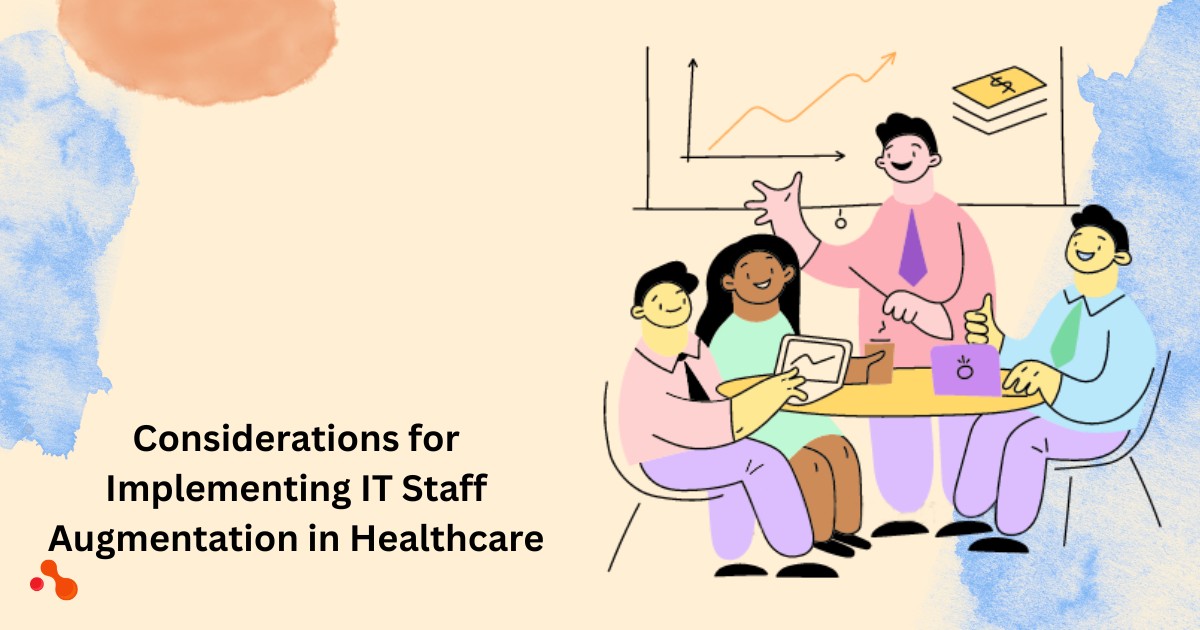Introduction
Are you curious about how technology is crucial in the healthcare industry? In this blog, we’ll explore a fascinating concept called IT staff augmentation. Imagine this: hospitals and healthcare organizations sometimes face challenges when managing IT projects. But worry not, because IT staff augmentation comes to the rescue! It’s like hiring superheroes but for your tech needs.
You see, IT staff augmentation allows healthcare organizations to hire skilled and experienced developers to join their teams, even remotely. It’s like having a secret weapon in your corner. These developers bring their expertise to solve complex IT problems, such as building innovative healthcare apps or enhancing cybersecurity measures.
By utilizing IT staff augmentation, healthcare organizations can overcome the hurdles of managing IT projects and enjoy numerous benefits. From accessing specialized skills to saving costs and even delivering projects faster, IT staff augmentation helps healthcare organizations stay ahead in the digital age.
So, get ready to dive into this exciting world of IT staff augmentation and discover how it can revolutionize healthcare IT projects. Buckle up, and let’s explore the advantages of hiring developers and remote developers in the healthcare industry!
Understanding IT Staff Augmentation
IT staff augmentation in healthcare IT involves temporarily hiring additional IT professionals, such as developers, to support and enhance the technology needs of healthcare organizations. It plays a vital role in ensuring the smooth functioning of healthcare IT systems and supporting delivering quality patient care. Let’s dive into the details:
Copyright TechPlanet.today

Definition: IT staff augmentation in healthcare IT refers to bringing in external IT professionals to work alongside the existing IT team in healthcare organizations. These professionals are hired temporarily to address specific IT projects or fill skill gaps within the organization.
- How IT staff augmentation works: Healthcare organizations identify their IT needs and determine the skills required.
- They either partner with an IT staff augmentation provider or hire remote developers or contract IT professionals.
- The selected IT professionals temporarily join the organization’s IT team and work on assigned tasks or projects.
- Regular communication is maintained between the augmented team and the organization to ensure coordination and progress tracking.
- Benefits of flexibility and scalability in healthcare IT projects: Adapting to changing needs: Healthcare IT projects often require adjustments based on evolving regulations or patient care requirements. Staff augmentation allows organizations to quickly scale their IT teams up or down to meet these changing needs.
- Access to specialized skills: Healthcare IT projects can involve complex technologies or specific domains. Staff augmentation enables organizations to hire remote developers or other IT professionals with expertise in electronic health records (EHR) systems, telemedicine, or data analytics.
- Efficient project execution: By augmenting their IT teams, healthcare organizations can handle multiple projects simultaneously without overburdening their existing staff. This ensures timely project delivery and improves overall operational efficiency.
Example scenario: A healthcare organization is implementing a new EHR system to streamline patient data management. They hire remote developers through IT staff augmentation to ensure a smooth transition. The augmented team works closely with the in-house IT staff, customizing and integrating the EHR system according to the organization’s needs.
In summary, IT staff augmentation is crucial in healthcare IT by providing temporary IT professionals to address specific projects or skill gaps. It offers flexibility and scalability, allowing healthcare organizations to adapt to changing needs, access specialized skills, and efficiently execute IT projects to benefit patient care and operational effectiveness.
Advantages of IT Staff Augmentation in Healthcare IT
IT staff augmentation is a beneficial strategy for healthcare organizations that involves hiring remote developers to enhance their IT capabilities. Let’s explore some of the advantages of this approach in simple and easy-to-understand language:
Enhanced Expertise and Skillset:
- When healthcare organizations hire remote developers, they gain access to a pool of highly skilled professionals with specialized expertise in IT.
- These developers bring invaluable knowledge and experience that can help improve the healthcare organization’s IT systems and processes.
- For example, imagine a hospital needing to develop a new patient management system. By hiring remote developers, they can benefit from the expertise of software engineers who have successfully built similar systems.
Cost Savings and Efficiency:
- IT staff augmentation can lead to cost savings compared to hiring full-time employees. Instead of maintaining a large in-house IT team, healthcare organizations can hire remote developers on a project basis or for specific tasks.
- By hiring remote developers, healthcare organizations can avoid expenses such as office space, equipment, and benefits associated with full-time employees.
- For instance, a small clinic may need help developing a mobile app to streamline appointment bookings. By hiring remote developers, they can achieve their goal without needing a permanent IT team, saving them money.
Faster Project Delivery:
- When healthcare organizations have a specific IT project or task, hiring remote developers allows them to expedite the project timeline.
- Remote developers often specialize in their respective areas and can quickly contribute to the project, helping the organization meet deadlines.
- For instance, a healthcare organization may need to implement a new electronic health records system. By hiring remote developers, they can accelerate the development and implementation process, ensuring the system is up and running in a shorter time frame.
Focus on Core Competencies:
- IT staff augmentation enables healthcare organizations to focus on their core competencies, such as providing quality patient care, while leaving IT tasks to remote developers.
- By delegating IT responsibilities, healthcare professionals can dedicate their time and energy to their primary role, ensuring patients receive the best possible care.
- For example, doctors and nurses can concentrate on treating patients, knowing that capable remote developers are handling the IT infrastructure.
Flexibility and Adaptability:
- Healthcare organizations often face changing IT requirements and fluctuating workloads. Hiring remote developers through IT staff augmentation offers flexibility and adaptability.
- Organizations can scale their IT resources up or down based on their needs without the constraints of a fixed in-house team.
- For instance, additional remote developers can be brought in during a healthcare system upgrade to support the workload. Once the project is complete, the organization can reduce the team size accordingly.
Considerations for Implementing IT Staff Augmentation in Healthcare
Implementing IT staff augmentation in healthcare organizations can be a valuable solution to address technology needs and enhance operational efficiency. Here are some important considerations and best practices to keep in mind for a smooth and effective integration of augmented IT staff:

- Define your requirements: Clearly outline your organization’s IT needs and identify the required skills and expertise from the augmented staff. Determine whether you need developers to build custom software solutions or remote developers to support existing systems.
- Partner with a reputable vendor: Choose a reliable vendor or staffing agency specializing in healthcare IT staff augmentation. Look for a vendor with a proven track record in delivering qualified professionals with the necessary technical skills and experience.
- Conduct thorough screening and interviews: Ensure that the candidates presented by the vendor are carefully screened and interviewed to assess their technical proficiency, communication skills, and cultural fit with your organization. This helps in selecting candidates who align with your goals and values.
- Establish clear communication channels: Effective communication is crucial for successful integration. Set up clear channels of communication between your in-house team and augmented staff. Tools like project management software, video conferencing, and instant messaging can facilitate seamless collaboration.
- Provide necessary training and orientation: Offer comprehensive training and orientation sessions to the augmented staff, acquainting them with your organization’s policies, procedures, and systems. This helps them quickly adapt and contribute to your team’s objectives.
- Encourage teamwork and collaboration: Promote a collaborative work environment where in-house and augmented staff can work together as a unified team. Foster an inclusive culture that values diverse perspectives and encourages knowledge sharing.
- Monitor performance and provide feedback: Regularly evaluate the performance of augmented staff members and provide constructive feedback. This ensures ongoing improvement and alignment with your organization’s objectives.
Challenges to consider:
- Cultural differences: Remote developers may be in different countries or regions, leading to potential cultural and language barriers. Foster a supportive and inclusive environment that promotes cultural understanding and effective communication.
- Integration with existing teams: Augmented staff should seamlessly integrate with your existing team. Encourage collaboration, assign clear roles and responsibilities, and establish processes to foster a cohesive work environment.
Implementing IT staff augmentation can be a valuable strategy to leverage specialized skills and expertise. By following these considerations and best practices, healthcare organizations can successfully integrate augmented staff and optimize their technology capabilities.
Conclusion
To wrap up, IT staff augmentation in healthcare IT offers numerous advantages that can greatly benefit healthcare organizations. By hire remote developers or experts through IT staff augmentation, healthcare providers can tap into enhanced expertise in software development, data analysis, and cybersecurity. This enables them to deliver high-quality IT solutions and services to patients more efficiently. Moreover, IT staff augmentation helps reduce costs by eliminating the need for hiring full-time employees or investing in extensive training programs. It also accelerates project delivery by accessing a pool of skilled professionals who can swiftly complete tasks. By leveraging IT staff augmentation, healthcare organizations can focus on their core competencies while gaining the flexibility and adaptability needed to navigate the ever-evolving IT landscape. It’s a strategic solution that empowers healthcare providers to meet their IT needs effectively and stays ahead in a rapidly changing industry.
In case you have found a mistake in the text, please send a message to the author by selecting the mistake and pressing Ctrl-Enter.
#Advantages #Staff #Augmentation #Healthcare


